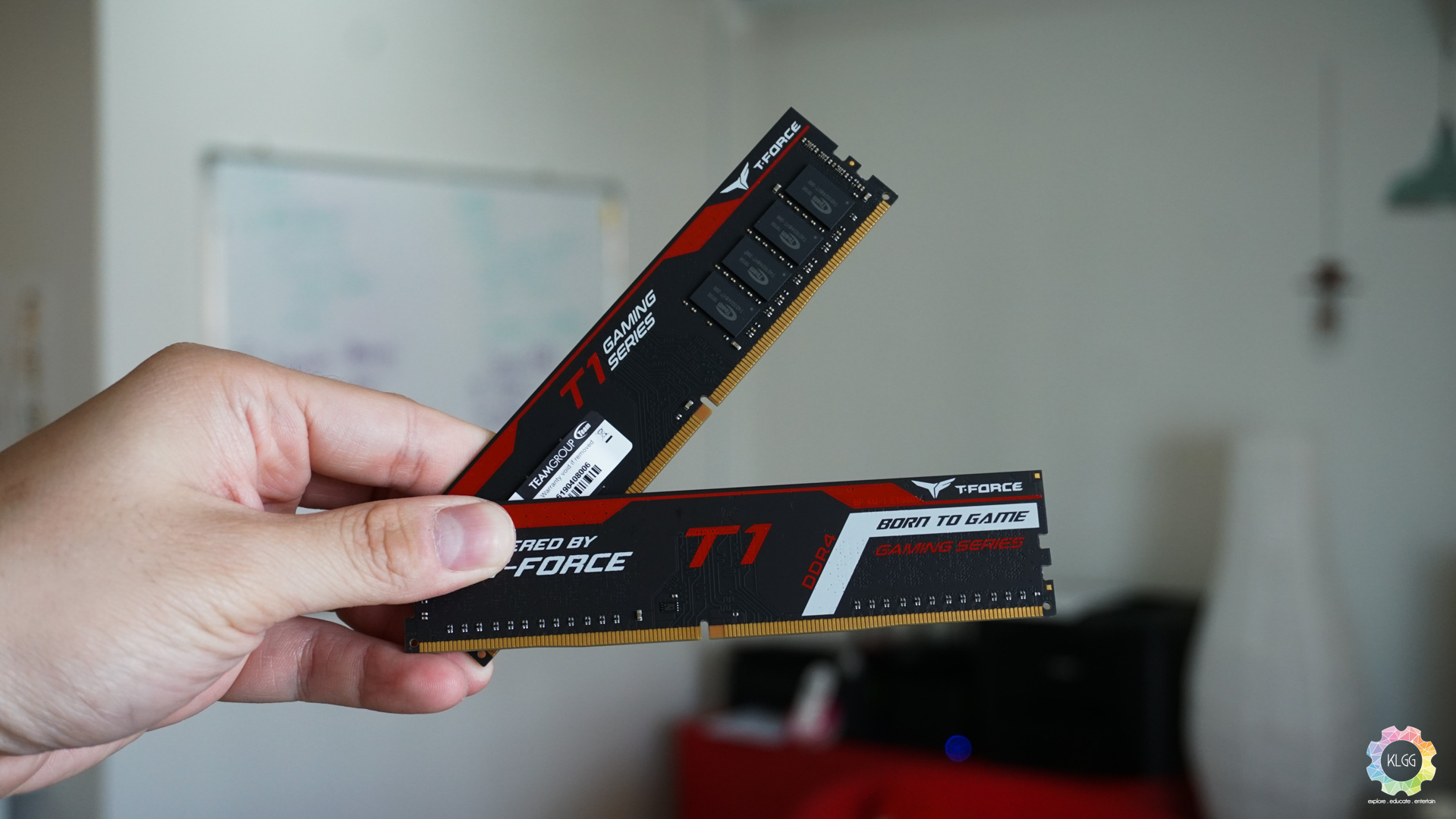As a company that focuses in making memory products, Team Group is no stranger to PC builders who offers great value products whether when it comes to building an entry-level or high-end gaming rig.
The company’s gaming centric line up, T-Force, has some decent product line up, and what we have here in our labs is none other than the company’s entry-level gaming RAM. Simply known as the T-FORCE T1, there’s no flashy RGB or heatsink to be found, but it doesn’t need all that to capture one’s attention with its Black PCB , red and white accents and text.

Let’s get to the basics, the kit that we received comes with two 8GB sticks and will support an XMP profile of 2666MHz, it supports both Intel and AMD platforms, which I’m pretty thankful to hear of that as I have had some trouble hunting for RAMs in the past for my Ryzen 7 rig.


System Configuration
- CPU: AMD Ryzen 7 2700X
- Motherboard: MSI X470 PRO CARBON (BIOS: 787Bv29)
- RAM: TeamGroup T1 DDR4 8GB x 2
- GPU: NVIDIA GeForce GTX 1080 Founders Edition
- SSD: Plextor M6s 256GB, Seagate IronWolf 1.92TB
- HDD: Seagate FireCuda 1TB
- PSU: EVGA Supernova 750W G+
- Case: InWin 101 ATX Chassis
Performance and Benchmarks
[sciba leftsrc=”https://klgadgetguy.com/wp-content/uploads/2019/08/T1-2400MHz.jpg” leftlabel=”T-FORCE T1 @ 2400MHz” rightsrc=”https://klgadgetguy.com/wp-content/uploads/2019/08/T1-2666MHz.jpg” rightlabel=”T-FORCE T1 @ XMP 2667MHz” mode=”horizontal” width=””]
Despite only having 267MHz difference in memory frequency and increased memory timings, we are seeing a 10% increase in all memory tests, while latency is slightly shortened, which in actual real world performance you might not see a significant improvement in loading speeds, but nonetheless its still a great thing to see faster performance than its default memory frequency.
You might think that without a flashy heatsink, the T-FORCE T1 isn’t going to survive any overclocking efforts, but in my tests, it exceeds my expectations as an entry-level performance RAM.
The MSI X470 Pro Carbon motherboard comes with a “Memory Try It” feature, so it is pretty easy to find out the sweet spot clock speed and timings that the RAM can perform properly, while I thought I almost succeeded in getting the RAM working at 3200MHz with a CL16-18-18-43 timing, I eventually ended up getting the RAM perform reliably without BSODs at 3066MHz with a CL20-20-20-43 timing.
Verdict
The Good
- Simple yet attractive design
- Decent overclocking capability
- Affordable
The Not so Good
- XMP timings could be better

